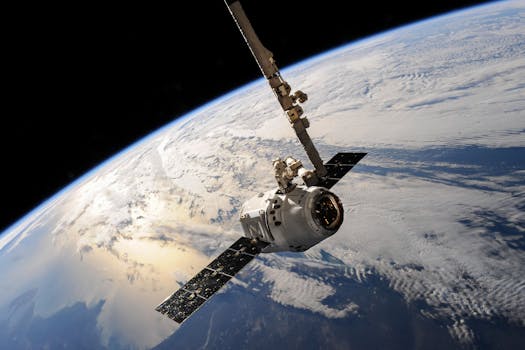
MEO Satellites: Revolutionizing Global Communication with Medium Earth Orbit Technology
MEO satellites, or Medium Earth Orbit satellites, are a type of satellite that operates in an orbit between 2,000 and 36,000 kilometers above the Earth’s surface. This orbit is higher than Low Earth Orbit (LEO) satellites but lower than Geostationary Orbit (GEO) satellites. MEO satellites are designed to provide a unique combination of global coverage, high-speed data transfer, and low latency, making them an attractive solution for a wide range of applications.
How MEO Satellites Work
MEO satellites use a constellation of satellites in Medium Earth Orbit to provide global coverage. Each satellite in the constellation communicates with a network of ground stations, which are responsible for transmitting and receiving data to and from the satellites. The satellites then relay the data to other satellites in the constellation, which forward it to the destination ground station. This process allows for fast and reliable data transfer between any two points on the globe.
MEO satellites have several advantages over other types of satellites. They have a shorter latency than GEO satellites, which means that data can be transmitted and received more quickly. They also have a wider coverage area than LEO satellites, which makes them more suitable for applications that require global connectivity. Additionally, MEO satellites are less prone to interference and signal degradation than LEO satellites, which makes them more reliable.
Applications of MEO Satellites
MEO satellites have a wide range of applications, including global communication, navigation, and remote sensing. They are used by governments, businesses, and individuals to provide connectivity in areas where traditional communication infrastructure is lacking. MEO satellites are also used for disaster response and recovery, providing critical communication services in areas affected by natural disasters or conflicts.
In addition to communication, MEO satellites are used for navigation and remote sensing. They provide location information and timing signals, which are used by a wide range of applications, including aviation, maritime, and land transportation. MEO satellites also collect data on the Earth’s environment, including weather patterns, ocean currents, and land use, which is used to support climate modeling, weather forecasting, and natural resource management.
Benefits of MEO Satellites
MEO satellites offer several benefits, including global coverage, high-speed data transfer, and low latency. They are also more reliable than other types of satellites, with a shorter downtime and faster recovery in the event of an outage. MEO satellites are also more secure than traditional communication infrastructure, with built-in encryption and secure transmission protocols.
MEO satellites are also more cost-effective than traditional communication infrastructure, with lower capital and operating expenses. They are also more flexible, with the ability to be easily reconfigured and upgraded as needed. This makes them an attractive solution for a wide range of applications, from global communication and navigation to remote sensing and disaster response.

